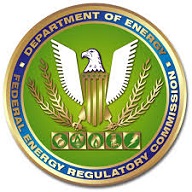FERC denies preliminary permit applications for two pumped storage projects on Navajo land

The Federal Energy Regulatory Commission has issued a notice denying applications for preliminary permits for two projects to be located on Navajo Nation land: Western Pumped Storage 1 and Western Pumped Storage 2.
FERC noted that the applicants named the projects the Western Navajo Pumped Storage 1 Project and the Western Navajo Pumped Storage 2 Project but the proposals are not in any way affiliated with the Navajo Nation, nor has the tribe any role in the applicants’ pursuit of the projects. To avoid the impression that the Navajo Nation is involved in developing the projects, FERC omitted “Navajo” from the project names.
Applicants Western Navajo Pumped Storage 1 LLC and Western Navajo Pumped Storage 2 LLC filed the applications in June 2023 and said the projects would be located entirely on Navajo Nation land, near the City of Page in Coconino County, Arizona. Because the applications raise similar issues, FERC considered them in a single order and denied the permit applications.
Western Pumped Storage 1 would consist of a new 75-foot-high, 8,000-foot-long upper reservoir with a surface area of 110 acres and a water surface elevation of 4,625 feet mean sea level (msl); new 75-foot-high, 8,200-foot-long lower reservoir with surface area of 110 acres and water surface elevation of 4,125 feet msl; 34-foot-diameter, 400-foot-long vertical power tunnel and 5,280-foot-long horizontal power tunnel, conveying water from the upper reservoir to the powerhouse; 120-foot-wide, 600-foot-long, and 100-foot-high powerhouse to be located on the eastern edge of the lower reservoir, with eight reversible pump-turbine units each rated at 49.5 MW; eight 12-foot-diameter steel pipes, merging into a proposed penstock; 34-foot-diameter penstock, conveying water to the upper reservoir during pumping operations; 3-mile-long, 230-kV transmission line, extending from a proposed substation near the powerhouse to the former Navajo Generating Station substation; and new substation, equipped with two 200-MVA Generator Step-up Units (GSU).
Western Pumped Storage 2 would consist of: a new 75-foot-high, 6,500-foot-long upper reservoir with a surface area of 55 acres and a water surface elevation of 6,475 feet msl; new 75-foot-high, 6,200-foot-long lower reservoir with surface area of 55 acres and water surface elevation of 5,475 feet msl; 24-foot-diameter, 1,000-foot-long vertical power tunnel and 4,600-foot-long horizontal power tunnel, conveying water from the upper reservoir to the powerhouse; 120-foot-wide, 500-foot-long, and 100-foot-high powerhouse to be located on the eastern edge of the lower reservoir, with four reversible pump turbine units each rated at 99 MW; four 12-foot-diameter steel pipes, merging into a proposed penstock; 24-foot-diameter penstock, conveying water to the upper reservoir during pumping operations; a 30-mile-long, 230-kV transmission line, extending from a proposed substation near the powerhouse to an existing substation adjacent to Glen Canyon Dam; and new substation, equipped with two 200-MVA GSUs.
Both projects have an estimated annual energy generation of 1,156 GWh.
FERC said it denied the permit applications because the proposed projects would be sited entirely on Navajo Nation land and the Nation opposes issuance of the permits. FERC said, “A denial on this basis is a matter of Commission discretion and is without prejudice. It does not preclude the applicants from working with the Tribe to resolve its concerns and resubmitting their applications if they are successful. We encourage the applicants to continue to work with the Navajo Nation if they wish to pursue the Western Pumped Storage projects.”
The purpose of a preliminary permit is to preserve the rights of the permit holder to have the first priority in applying for a license for the project that is being studied. A preliminary permit does not authorize the permittee to access lands and does not authorize the permittee to undertake any land-disturbing activities. Permit conditions are framed to ensure the permittee does not tie up a site without pursuing in good faith a study of the project’s feasibility. If the project is found to be feasible, the permittee can use the data and information gathered to prepare an application for a license.
Originally published in Hydro Review.




